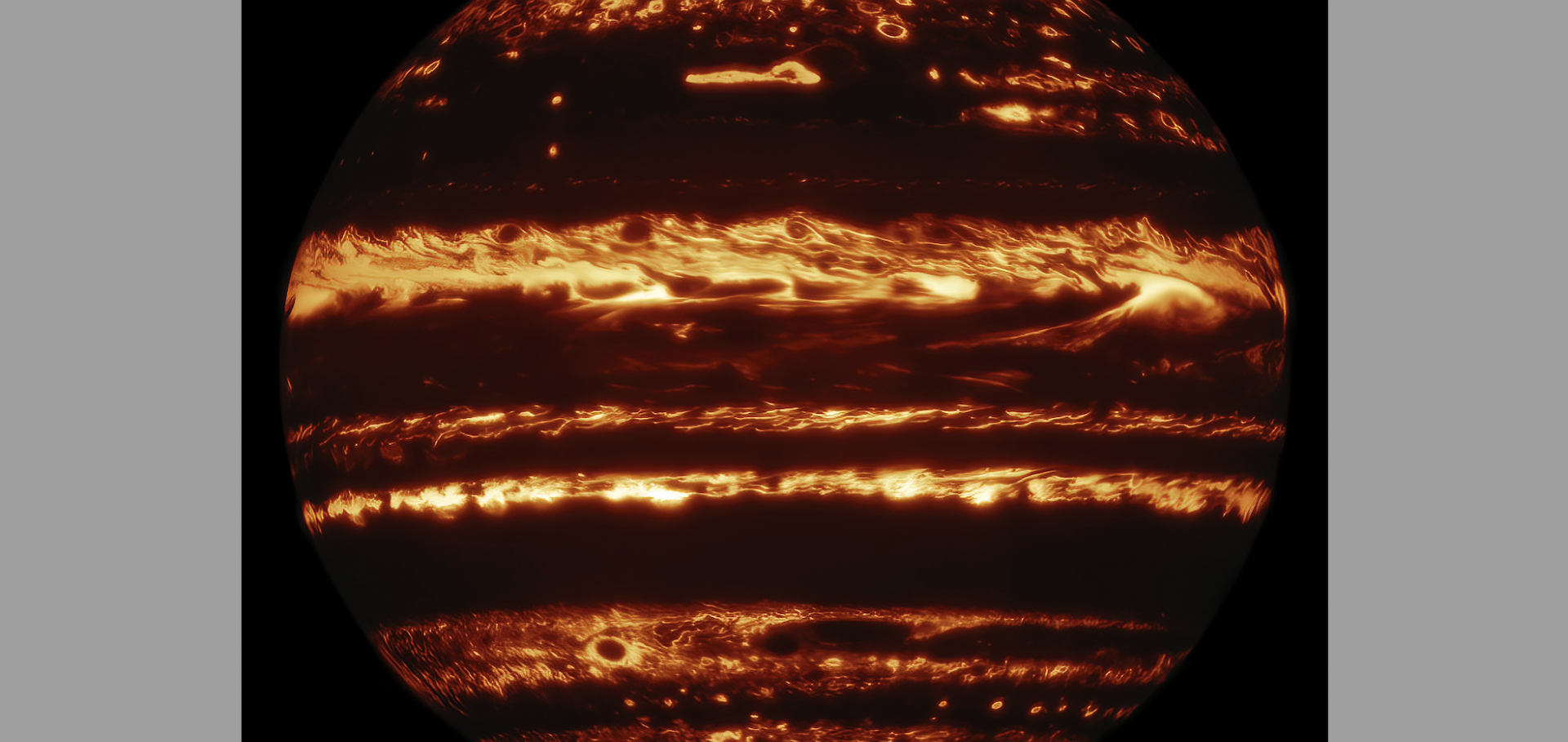Atmospheric circulation of brown dwarfs and Jupiter- and Saturn-like planets: Zonal jets, long-term variability, and QBO-type oscillations
Astrophysical Journal American Astronomical Society 883:4 (2019)
Abstract:
Brown dwarfs and directly imaged giant planets exhibit significant evidence for active atmospheric circulation, which induces a large-scale patchiness in the cloud structure that evolves significantly over time, as evidenced by infrared light curves and Doppler maps. These observations raise critical questions about the fundamental nature of the circulation, its time variability, and its overall relationship to the circulation on Jupiter and Saturn. Jupiter and Saturn themselves exhibit numerous robust zonal (east–west) jet streams at the cloud level; moreover, both planets exhibit long-term stratospheric oscillations involving perturbations of zonal wind and temperature that propagate downward over time on timescales of ~4 yr (Jupiter) and ~15 yr (Saturn). These oscillations, dubbed the quasi-quadrennial oscillation (QQO) for Jupiter and the semiannual oscillation (SAO) on Saturn, are thought to be analogous to the quasi-biennial oscillation (QBO) on Earth, which is driven by upward propagation of equatorial waves from the troposphere. To investigate these issues, we here present global, three-dimensional, high-resolution numerical simulations of the flow in the stratified atmosphere—overlying the convective interior—of brown dwarfs and Jupiter-like planets. The effect of interior convection is parameterized by inducing small-scale, randomly varying perturbations in the radiative–convective boundary at the base of the model. Radiative damping is represented using an idealized Newtonian cooling scheme. In the simulations, the convective perturbations generate atmospheric waves and turbulence that interact with the rotation to produce numerous zonal jets. Moreover, the equatorial stratosphere exhibits stacked eastward and westward jets that migrate downward over time, exactly as occurs in the terrestrial QBO, Jovian QQO, and Saturnian SAO. This is the first demonstration of a QBO-like phenomenon in 3D numerical simulations of a giant planet.Atmospheric Variability Driven by Radiative Cloud Feedback in Brown Dwarfs and Directly Imaged Extrasolar Giant Planets
Astrophysical Journal American Astronomical Society 874:111 (2019)
Abstract:
Growing observational evidence has suggested active meteorology in the atmospheres of brown dwarfs (BDs) and directly imaged extrasolar giant planets (EGPs). In particular, a number of surveys have shown that near-infrared brightness variability is common among L and T dwarfs. Despite the likelihood from previous studies that atmospheric dynamics is the major cause of the variability, the detailed mechanism of the variability remains elusive, and we need to seek a natural, self-consistent mechanism. Clouds are important in shaping the thermal structure and spectral properties of these atmospheres via their opacity, and we expect the same for inducing atmospheric variability. In this work, using a time-dependent one-dimensional model that incorporates a self-consistent coupling between the thermal structure, convective mixing, cloud radiative heating/cooling, and condensation/evaporation of clouds, we show that radiative cloud feedback can drive spontaneous atmospheric variability in both temperature and cloud structure under conditions appropriate for BDs and directly imaged EGPs. The typical periods of variability are 1 to tens of hr, with a typical amplitude of the variability up to hundreds of K in effective temperature. The existence of variability is robust over a wide range of parameter space, but the detailed evolution of the variability is sensitive to model parameters. Our novel, self-consistent mechanism has important implications for the observed flux variability of BDs and directly imaged EGPs, especially for objects whose variability evolves on short timescales. It is also a promising mechanism for cloud breaking, which has been proposed to explain the L/T transition of BDs.Effects of dissociation/recombination on the day–night temperature contrasts of ultra-hot Jupiters
Research Notes of the AAS American Astronomical Society 2:2 (2018) 36
Atmospheric circulation of hot Jupiters: dayside–nightside temperature differences. II. Comparison with observations
Astrophysical Journal American Astronomical Society 835:2 (2017) 198
Abstract:
The full-phase infrared light curves of low-eccentricity hot Jupiters show a trend of increasing fractional dayside–nightside brightness temperature difference with increasing incident stellar flux, both averaged across the infrared and in each individual wavelength band. The analytic theory of Komacek & Showman shows that this trend is due to the decreasing ability with increasing incident stellar flux of waves to propagate from day to night and erase temperature differences. Here, we compare the predictions of this theory with observations, showing that it explains well the shape of the trend of increasing dayside–nightside temperature difference with increasing equilibrium temperature. Applied to individual planets, the theory matches well with observations at high equilibrium temperatures but, for a fixed photosphere pressure of $100\ \mathrm{mbar}$, systematically underpredicts the dayside–nightside brightness temperature differences at equilibrium temperatures less than $2000\ {\rm{K}}$. We interpret this as being due to the effects of a process that moves the infrared photospheres of these cooler hot Jupiters to lower pressures. We also utilize general circulation modeling with double-gray radiative transfer to explore how the circulation changes with equilibrium temperature and drag strengths. As expected from our theory, the dayside–nightside temperature differences from our numerical simulations increase with increasing incident stellar flux and drag strengths. We calculate model phase curves using our general circulation models, from which we compare the broadband infrared offset from the substellar point and dayside–nightside brightness temperature differences against observations, finding that strong drag or additional effects (e.g., clouds and/or supersolar metallicities) are necessary to explain many observed phase curves.Effects of latent heating on atmospheres of brown dwarfs and directly imaged planets
Astrophysical Journal American Astronomical Society 835:2 (2017) 186-186


